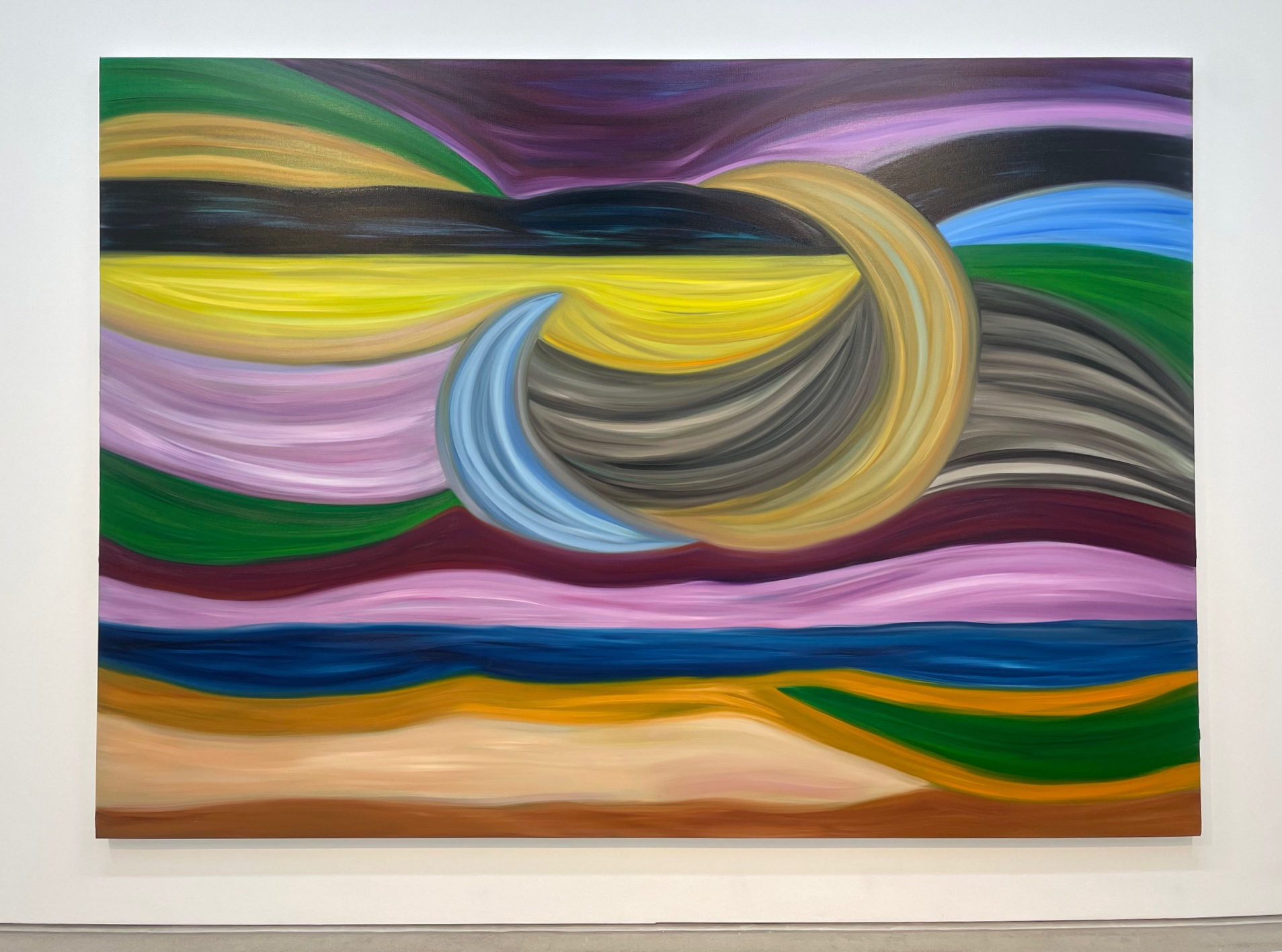LEIPZIG, Germany — My first impression of Marina Perez Simão’s recent oil paintings — 17 of which are shown at G2 in Leipzig, in the artist’s first institutional solo exhibition in Germany — was how remarkably grounded they felt. For all their evident moltenness, with their billowy shapes suggesting undulating landscapes, these compositions also conveyed a strong, even voluptuous sense of mass. In her works, all painted in 2024, the artist systematizes nature’s motifs and distills them into interlocking volumes and color bands, making them as cerebral as they are sensuous.
Perez Simōez has mentioned in interviews that she is inspired by the Baroque movements in her native Brazil and Europe. This offers some hint as to the volumetric heft she deploys to dramatic effects. Sunrise and sunset, for instance, are the main events of the first two untitled paintings. In the former, a golden glow lays flat like a pancake on bands of thick lavender, blue, and gray, which could depict either soil or water. Here, light is a self-contained solid rather than an effect; its luminosity hardly alters the adjacent colors or forms. The sun is more literal in the second painting, and yet even here the landscape opens like a petal, suggesting that this spectacle is a quasi-mystical portal to reverie rather than a matter-of-fact depiction of nature.
Perez Simão’s paintings, however, are hardly ornate. When looking at them, I thought less of the lavish gold adorning Brazil’s Baroque churches than the faded fabrics that sometimes dress those churches’ humbler saintly statues. I thought of fiber muddled by age, gold tainted with patina, and lush hills subdued by a dry season’s unyielding dirt. All these elements, some geographical or art historical, others emotive, inform Perez Simão’s works, which offer not so much a critique of Modernism as much as a somber reevaluation carried forth by her bend towards the meditative and mystical.
The paintings’ fluid transitions between figuration and abstraction also bring to mind Brazilian Modernist painter Tarsila do Amaral. Though that artist typically captured landscapes, such as palm trees and farm animals, with more direct specificity, more mysterious works, such as “The Moon” and “Distance” (both 1928) share an affinity with those of Perez Simão. Both artists seem to seek a language that speaks as much to nature’s sublimity as it does to one’s state of mind when faced with its grandeur.
Like do Amaral at her most symbolic, Perez Simaõ conveys existential wonder and loneliness. In fact, she may take that latter quality a step further — unlike do Amaral, who inserted a human figure or worked with scales that suggested a correspondence of a gazer’s body to natural formations in her works, Perez Simão dissolves all such boundaries and sense of proportion, leaving viewers entirely immersed in nature and the mind’s theater. This complete immersion left me feeling that she might be most closely aligned with modernist painter Georgia O’Keeffe. Art historian Barbara Novak once wrote that when “you gaze at the hollowed centers of [her] opened petals … you feel as if you could fall inside.” Perez Simão’s works similarly invite one to take a plunge.




Marina Perez Simão: Zwielicht continues at G2 Kunsthalle (Dittrichring 13, Leipzig, Germany) through March 2. The exhibition was organized by the institution.

